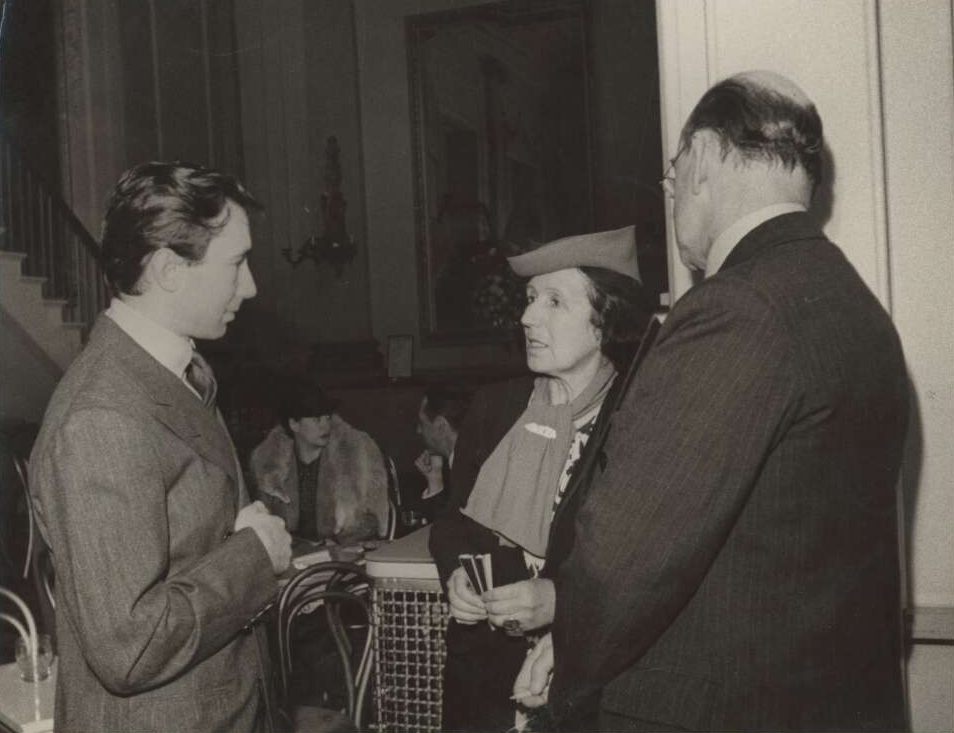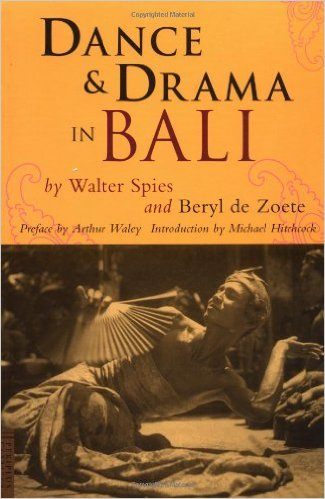The World’s First Global Dance Critic Was a Victorian Aerobics Teacher
Beryl de Zoete scoured the world for all the best dance moves.

Beryl de Zoete photographed in 1939. (Photo: Peggy Delius/National Library of Australia)
Beryl de Zoete was a pioneer of the modern concept of doing what you love. Born in London in 1879 to a middle-class family of Dutch descent, the classically trained ballerina revered dance as the noblest of the art forms. She would go on to dedicate her life and career to traveling around the world in search of the most interesting dances to record. She never shied away from new experiences, like all-night exorcism ceremonies in Bali, nor did she worry about traveling alone.
De Zoete spent her twenties working as a dance teacher of Dalcroze eurhythmics in England, a kind of musical aerobics that was considered modern, advanced, and a bit “fast.” The leotards and tunics that practitioners wore didn’t much help matters. Writing while she taught, by the age of 30 de Zoete had established herself as a dance critic, and soon embarked on long research trips to Bali and Java, North Africa, India, and Sri Lanka, where she went on to describe the dance performances she came across in publications like Ballet magazine, The New Statesman, The Daily Telegraph, and The Spectator.
Fluent in French, German, and Italian, de Zoete studied English at Oxford University at a time when a college education was still the exception for women. A year after graduating, aged 23, she married journalist and essayist Basil de Sélincourt. Vowing celibacy and vegetarianism to each other, the marriage lasted less than a decade. The reason? Society whispers abounded that de Zoete knew the marriage was over when de Selincourt brought home another woman in one hand and a steak in the other.
During the marriage, de Zoete authored two books–Homes of the First Franciscans in 1904, and Venice in 1909. She also translated Giulio Carotti’s A History of Art Volume 2 from Italian to English.

Two legong dancers in Bali. 1953. (Photo: Tropenmuseum, part of the National Museum of World Cultures/ CC BY-SA 3.0)
At the age of 39 she met and fell in love with the English Sinologist Arthur Waley. Their coupling was an unusual one for the time, de Zoete promising Waley she wasn’t interested in marriage, having children, or keeping a home. For many periods they didn’t even share an apartment. And when they did, it wasn’t a scene of tidy domesticity. According to de Zoete’s biographer, Mariam Ury, supper guests were invariably served “tinned baked beans accompanied by hot house grapes and good wine” because de Zoete didn’t want to lose her creative energy to chores.
A great conversationalist who was able to draw her shy partner out of himself, de Zoete and Waley were loosely tied with the Bloomsbury set, always arrived early at parties, and were typically the last to leave. “Bohemian—with dyed black hair and rings on every finger,” according to Ury, she was usually remembered as sharp tongued but never malicious, unconventional and warm.
In 1933, de Zoete gave Kurt Jooss, the founder of the Jooss Ballet, and his troupe a place of refuge with her friends at Dartington Hall, in Devon, when Jooss needed to escape the Nazis after refusing an order to fire all the Jews from his company. De Zoete may have saved the lives of some of the Jewish ballet dancers.

Walter Spies’ home in Ubud, Bali. Spies and de Zoete co-wrote Dance and Drama in Bali. (Photo: Tropenmuseum, part of the National Museum of World Cultures/ CC BY-SA 3.0)
Throughout her partnership with Waley, de Zoete would take off on long solo trips abroad. In 1935, at the age of 56, she traveled to Bali and worked with the filmmaker and artist Walter Spies to produce their acclaimed joint book, Dance and Drama in Bali. Published in 1938, it’s still used as a reference today for traditional Balinese dance and theatrical forms.
However, de Zoete was quick to admit her lack of training in ethnography, writing, “I am not at all good at being learned, but everything I speak of I have seen with my own eyes and felt with my own heart.”
Her biographer, Ury, writes that while on the island de Zoete would watch and record the dances of different villages for hours, day after day. “She noted individual dancers’ movements down to the fine details—the movement of a finger or the changing direction of the eyes.”
And according to Waley, in her writing de Zoete excelled at “descriptions of dancing, descriptions of landscape and architecture and inspired vignettes of people.”

A 2001 edition of the book Dance and Drama in Bali. (Photo: Courtesy Periplus Editions)
Up until the outbreak of the Second World War she traveled the world—from India and Sri Lanka to Libya and Spain—and supported herself through her articles for Ballet magazine, which she received grants from, and various newspapers. From 1946 to 1948, she worked as the dance critic for The New Statesman. Many of her worried letters to Waley during this period followed the same theme, “Have my cheques come in yet?”
Beryl de Zoete wrote two more lauded books on South Asian and Southeast Asian dancing, before her death, in 1962, from Huntington’s disease. By creating a livelihood around the artform she loved despite growing up in the restrictive Victorian era, she remains an inspiration today.
Mariam Ury sums her up best: “To the end of her life she was engaged in what was beautiful and vital.”












Follow us on Twitter to get the latest on the world's hidden wonders.
Like us on Facebook to get the latest on the world's hidden wonders.
Follow us on Twitter Like us on Facebook